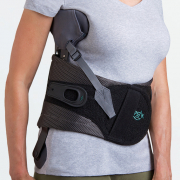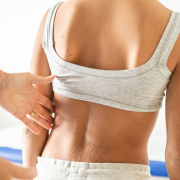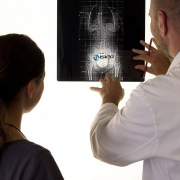Brace wearing: tenacity is rewarded with improvements
It is not just a question of how many hours the brace is worn but also patient compliance with the prescription. Take, for example, Marco and Ginevra. Both have idiopathic scoliosis, are followed by Isico specialists, and wear a Sforzesco brace for 20 and 23 hours a day, respectively. Marco complies with the prescription for wearing the brace, but he is inconsistent with the prescribed hours: sometimes he wears it for the 20 hours prescribed, others for 10, and others for 22. Ginevra instead regularly respects the prescription of 23 hours daily; this allows her to attain better results and avoid worsening.
Our study demonstrates this, Consistent and regular daily wearing improves bracing results: a case-control study published in the journal Scoliosis and Spinal Disorders some years ago. The study considered 168 patients who wore a brace for between 18 and 23 hours per day, divided according to high, medium, or low compliance and classified according to consistency or inconsistency in wearing.
The data were collected using Thermobrace, a temperature sensor applied to the brace to monitor its actual wearing.
Isico was the first organization to introduce Thermobrace into the daily clinical routine in 2010, and since then, its use has become commonplace. It has been verified that the relationship between doctor and patient is strengthened through Thermobrace, since the therapeutic choices are based on real data; therefore, the data obtained from the sensor can be used to facilitate the use of the brace.
“The data confirmed that the brace should be worn consistently, which means that wearing the brace for a constant number of hours allows the achievement of good results,” explains Dr Sabrina Donzelli, physiatrist and author of the publication, “also for those who are not completely compliant to the prescribed hours”.
This confirms what we always recommend to patients who undergo brace therapy: the break must always be constant; fewer hours one day and then recovering the lost hours in the following days is not ideal!
In addition to not adhering to the prescribed treatment, patients who are also not consistent in wearing the brace are at greater risk of worsening. Patients who have worn the brace for less than 70% of the prescribed duration are considered non-compliant.
“The study shows that to achieve the best results, the brace must be worn for a consistent number of hours. The attempt to recover lost hours is useless,” concludes Dr Donzelli “While tenacity together with compliance, i.e., the adherence of the patient to the prescription, is rewarded”.





